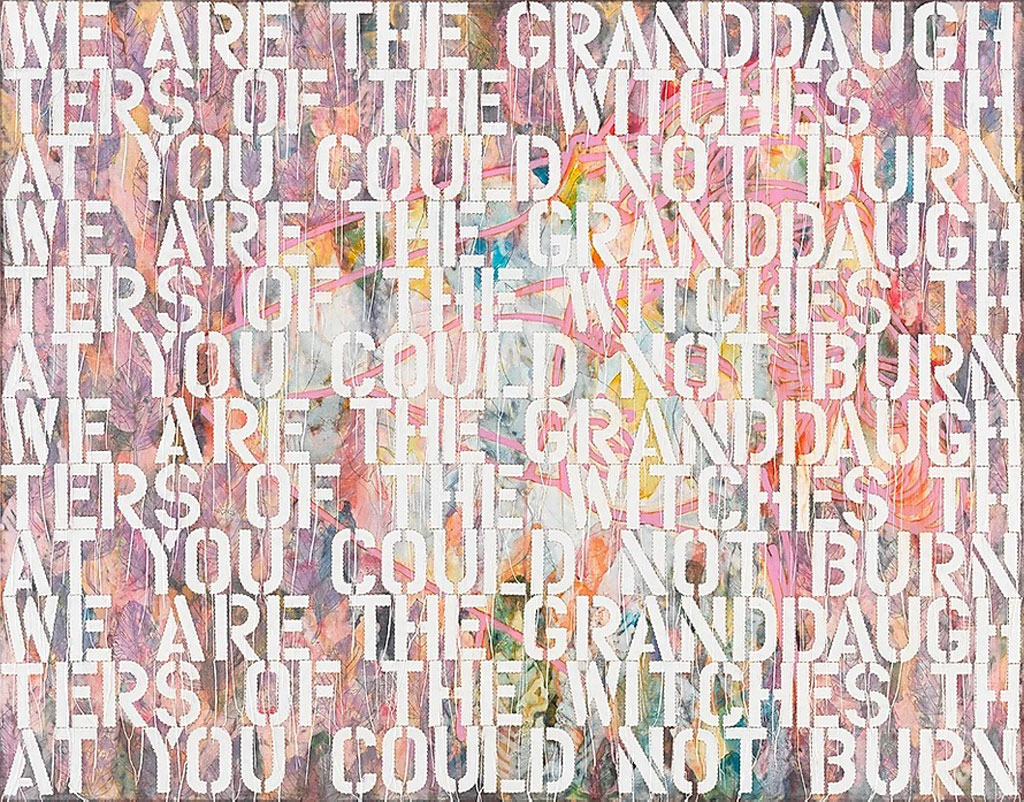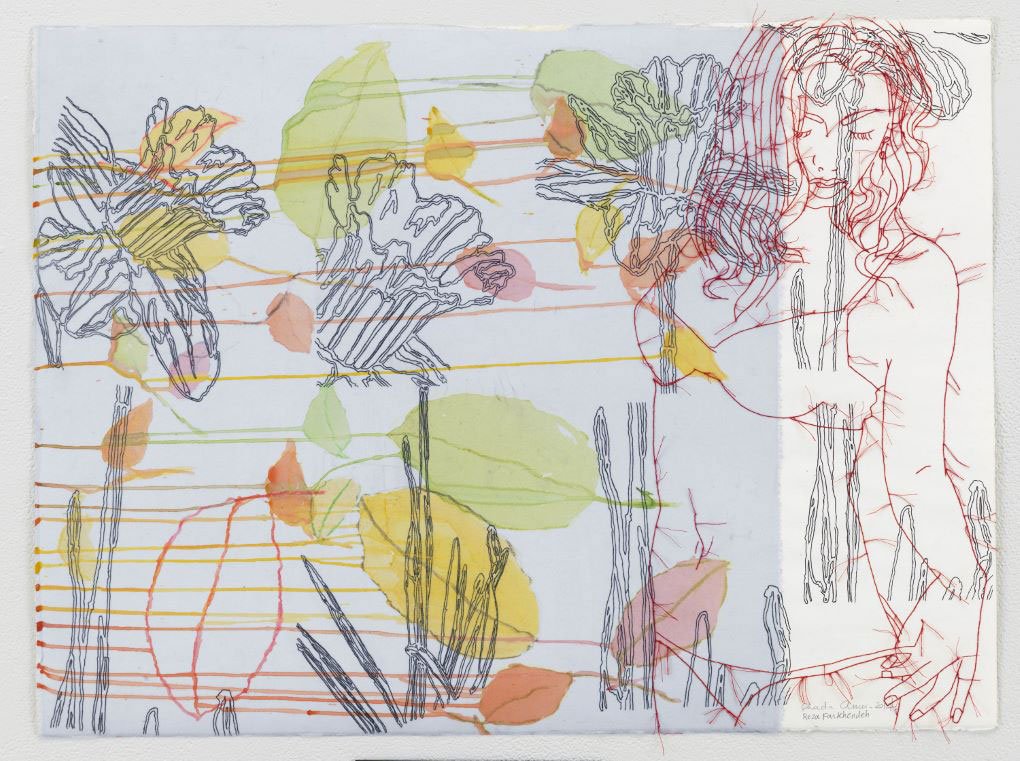ART-TRIBUTE:Weaving and other Practices…Ghada Amer
 We continue our Tribute with the Egyptian artist Ghada Amer (1963). While she describes herself as a painter and has won international recognition for her abstract canvases embroidered with erotic motifs, Ghada Amer is a multimedia artist whose entire body of work is infused with the same ideological and aesthetic concerns.
We continue our Tribute with the Egyptian artist Ghada Amer (1963). While she describes herself as a painter and has won international recognition for her abstract canvases embroidered with erotic motifs, Ghada Amer is a multimedia artist whose entire body of work is infused with the same ideological and aesthetic concerns.
By Efi Michalarou
 Ghada Amer was born in Cairo in 1963 and raised in France where she studied at Villa Arson, Nice. Her wide-ranging practice spans painting, sculpture, works on paper, and garden and mixed-media installations. Over the course of her multi-decade career, Amer has created an aesthetic and conceptual language that confronts the systemic subjugation of the female voice and body. Recognizing the ways in which women are taught, almost from birth, to model behaviors and traits shaped by others, Amer’s work actively subverts these frameworks, creating a space that recognizes and celebrates female autonomy, sexuality, and liberation. “I believe that all women should like their bodies and use them as tools of seduction” Amer stated. In 1991, Amer’s “Cinq Femmes Au Travail” embroidery stitching techniques to show women performing tasks that had been advertised for women in magazines: childcare, house cleaning, and cooking. The quadriptych is constructed as neatly stitched line drawings on unprimed canvases. This was a turning point for Amer because by using embroidery and gel on canvas as her medium, she was developing her own feminine language of painting. The series began a series of narrative works that present women performing daily chores or quotidian activities, demonstrating Amer’s continued interest in the themes of “bored women” as she characterizes it. In 1994 she began to depict pornographic subject matter, images of naked women in ecstasy or with other women to overthrow ideas of exploitation and objectification that have long been associated with these images. In Amer’s well-known erotic embroideries she at once rejects oppressive laws set in place to govern women’s attitudes toward their bodies and repudiates first-wave feminist theory that the body must be denied to prevent victimisation. By depicting explicit sexual acts with the delicacy of needle and thread, the images’ significance assumes a tenderness absent within simple objectification. Amer continuously allows herself to explore the dichotomies of an uneasy world and confronts the language of hostility and finality with unsettled narratives of longing and love. Amer has also created a number of text-based works, most notably the installation “Encyclopaedia of Pleasure”, which comprises 57 canvas boxes inscribed with embroidered texts serving as investigations of sexual and spiritual identity. While her works serve as commentary on the roles of women, they also offer a critique of painting itself, particularly in its largely masculine Abstract Expressionist mode. Her incorporation of thread into the parameters of the canvas legitimates a form of expression seen as particularly feminine.
Ghada Amer was born in Cairo in 1963 and raised in France where she studied at Villa Arson, Nice. Her wide-ranging practice spans painting, sculpture, works on paper, and garden and mixed-media installations. Over the course of her multi-decade career, Amer has created an aesthetic and conceptual language that confronts the systemic subjugation of the female voice and body. Recognizing the ways in which women are taught, almost from birth, to model behaviors and traits shaped by others, Amer’s work actively subverts these frameworks, creating a space that recognizes and celebrates female autonomy, sexuality, and liberation. “I believe that all women should like their bodies and use them as tools of seduction” Amer stated. In 1991, Amer’s “Cinq Femmes Au Travail” embroidery stitching techniques to show women performing tasks that had been advertised for women in magazines: childcare, house cleaning, and cooking. The quadriptych is constructed as neatly stitched line drawings on unprimed canvases. This was a turning point for Amer because by using embroidery and gel on canvas as her medium, she was developing her own feminine language of painting. The series began a series of narrative works that present women performing daily chores or quotidian activities, demonstrating Amer’s continued interest in the themes of “bored women” as she characterizes it. In 1994 she began to depict pornographic subject matter, images of naked women in ecstasy or with other women to overthrow ideas of exploitation and objectification that have long been associated with these images. In Amer’s well-known erotic embroideries she at once rejects oppressive laws set in place to govern women’s attitudes toward their bodies and repudiates first-wave feminist theory that the body must be denied to prevent victimisation. By depicting explicit sexual acts with the delicacy of needle and thread, the images’ significance assumes a tenderness absent within simple objectification. Amer continuously allows herself to explore the dichotomies of an uneasy world and confronts the language of hostility and finality with unsettled narratives of longing and love. Amer has also created a number of text-based works, most notably the installation “Encyclopaedia of Pleasure”, which comprises 57 canvas boxes inscribed with embroidered texts serving as investigations of sexual and spiritual identity. While her works serve as commentary on the roles of women, they also offer a critique of painting itself, particularly in its largely masculine Abstract Expressionist mode. Her incorporation of thread into the parameters of the canvas legitimates a form of expression seen as particularly feminine.
![]()

![]()





![]()
